I was sitting with my dad the other night talking about foraging and he told me about wild sorrel. I was surprised that I had not taken the time to learn more about it before. He said he loves the lemony flavor and grows domesticated versions in his yard. A little research together and we found some great information to compliment my father’s experiences. key links are listed at the bottom.
What you will find below are two different plants both referred to by the common name sorrel (wood and sheep sorrel). I had thought to put together two articles, but since they share a common name and are both common edible plants, I went ahead and lumped them together for this quick post. enjoy.
Jon
Wood Sorrel
Wood sorrel, or common wood sorrel, often refers to the entire genus Oxalis. It is common in Europe, Asia, and most of North America. Leaves, flowers, seedpods, and tubers of this plant can all be eaten. Wood sorrel is also rich in Vitamins A and C and can often be located year round. It has a preference for shady undergrowth. There are many variants of the genus Oxalis but there are no poisonous look-alikes. Clover is often mistaken for wood sorrel but clover is not poisonous.
Wood sorrel (Oxalis crassipes)
Another picture of wood sorrel (Oxalis crassipes)
Close-ups of wood sorrel flower (Oxalis crassipes).
Common yard weed wood sorrel (Oxalis dillenii), often mistaken for a clover.
The tangy seed pods of wood sorrel, or “bananas,” are also edible.
Wood sorrel tubers. Each “scale” is a thick, triangular wedge that easily break away from each other.
North American distribution, attributed to U. S. Department of Agriculture.
Patches of wood sorrel are very prevalent on forest floors, often near wild violets, cleavers, wild onions, etc… The three-lobed leaf looks similar to clover/shamrocks but sorrels have a cleft at the top, giving them a heart-shape whereas clovers are round or slightly pointed. Wood sorrel leaves range in size from 1/2″ to almost 3″ across. They have a very strong, tangy flavor that some people find too intense. It only takes a few to spice up a salad. The purplish-pink flowers can also be added to salads though mainly just for color.
Wood sorrel tubers can be just about any color of the rainbow. They have less oxalic acid than other parts of the plants so they aren’t as tangy. Their flavor is somewhat like a carrot and so that’s how I use them: raw, steamed, or tossed into stews.
Excessive amounts of oxalic acid can lead to kidney stones in some people. Be sure to drink plenty of water when eating wood sorrel. Also avoid dairy products, if possible, as the oxalic acid binds strongly to the calcium to make calcium oxalate, which is the key mineral of the kidney stones.
Sheep Sorrel
The other common wild sorrel is sheep sorrel, Rumex acetosella. The plant and its subspecies are common perennial weeds. It has green arrowhead-shaped leaves and red-tinted deeply ridged stems, and it sprouts from an aggressive and spreading rhizome. The flowers emerge from a tall, upright stem. Female flowers are maroon in color. This one is closely related to that cultivated French sorrel. Like the cultivated sorrel, sheep sorrel leaves are arrow-shaped. But sheep sorrel leaves are much smaller— often no more than 1 inch long. There are sheaths encasing the leafstalks where they attach to the stems. The leaves on the upper parts of the stalks are often smaller and more oblong than arrow-shaped.
Sheep sorrel also loves sun, and often grows amidst the grass in lawns. As with wood sorrel, though, I find bigger, tenderer leaves where the plants also get a little shade.
Any recipe that uses cultivated sorrel can be made with one of the wild sorrels. If you’re using sheep sorrel, you can skip the part of most sorrel recipe instructions that calls for stripping away tough midribs from the leaves. I’ve yet to find a sheep sorrel leaf that was big enough to have a tough midrib.
http://www.foragingtexas.com/2008/08/wood-sorel.html
https://en.wikipedia.org/wiki/Rumex_acetosella
http://www.motherearthnews.com/real-food/foraging-and-cooking-with-wild-sorrel-zbcz1308.aspx

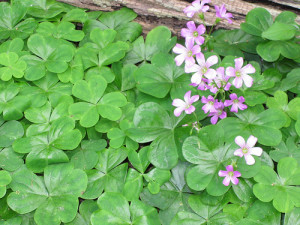
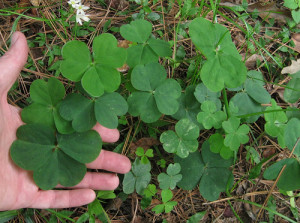
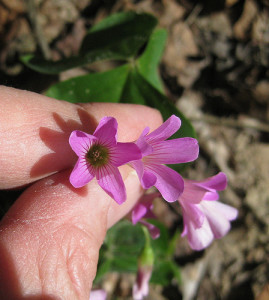
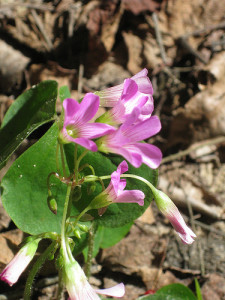
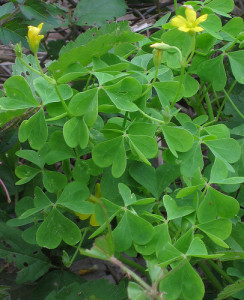
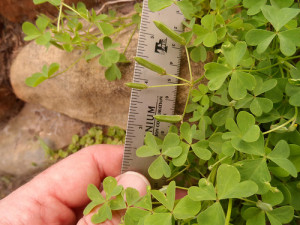
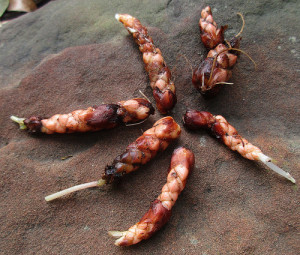

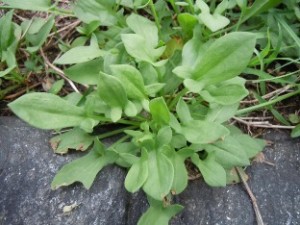

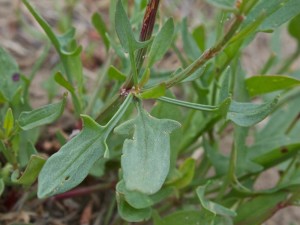
Leave a Reply